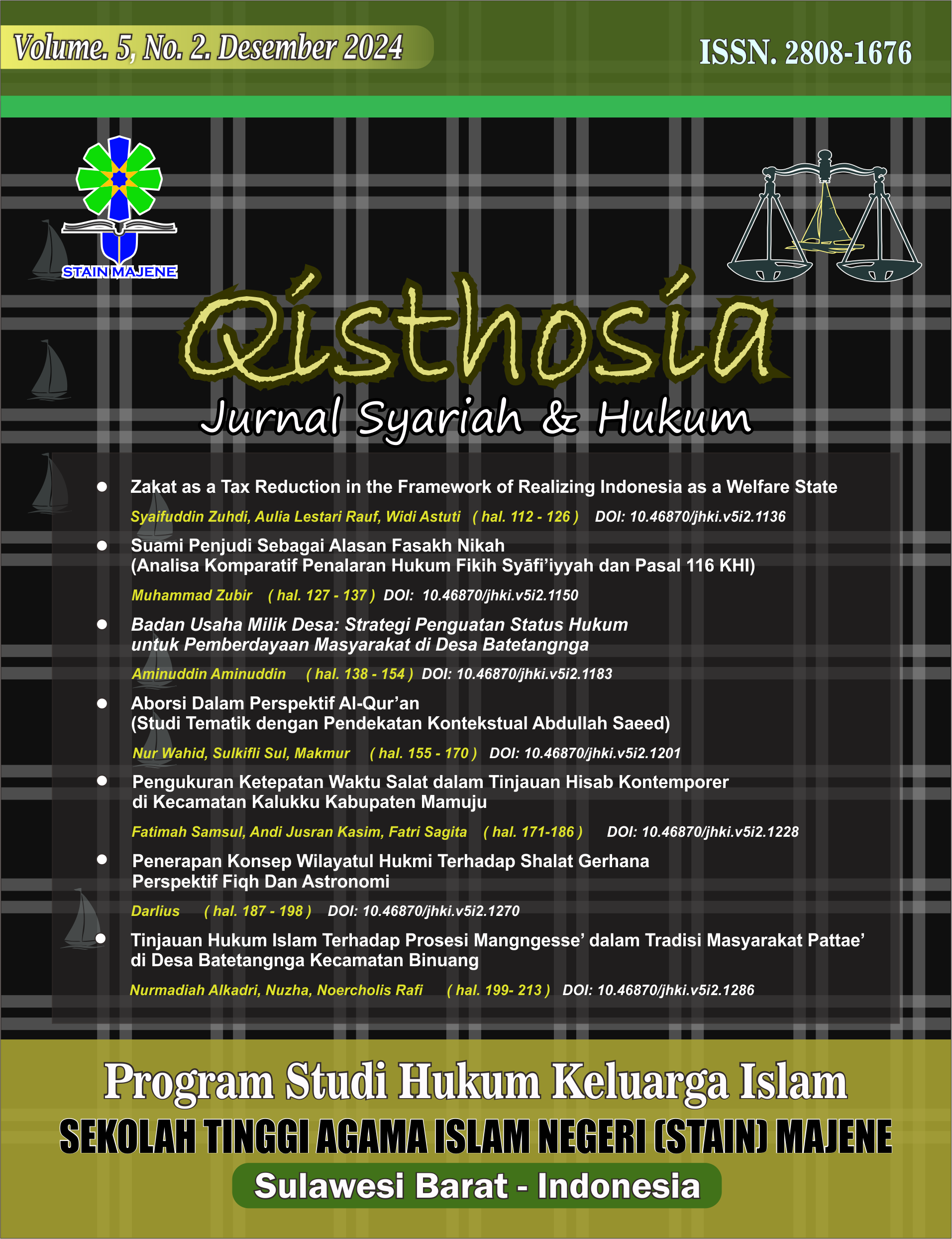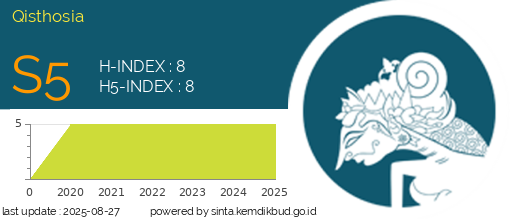Pengukuran Ketepatan Waktu Salat dalam Tinjauan Hisab Kontemporer di Kecamatan Kalukku Kabupaten Mamuju
DOI:
https://doi.org/10.46870/jhki.v5i2.1228Keywords:
Hisab method, accuracy, ephemeris, digital clocks, prayer scheduleAbstract
This study aims to analyze the guidelines followed by the community in Kalukku District, Mamuju Regency, in determining prayer times, and to evaluate the accuracy of prayer schedules based on contemporary hisab methods. The approaches used in this research include sociological, normative theological (shar'i), and astronomical approaches. Data were collected through field observations and analyzed using the ephemeris method to assess the accuracy of prayer times. The findings indicate that the community in Kalukku District generally relies on digital clocks and the prayer schedule issued by the Ministry of Religious Affairs of Mamuju Regency. Accuracy tests conducted on 30 mosques and one prayer room (mushalla) revealed that most of the prayer schedules were accurate, with a time difference of 0-1 minutes. Six mosques had a time difference of 1-2 minutes, while two mosques (Masjid Darussalam Padang Malolo and Mushalla Al-Amin) showed inaccuracies with time differences ranging from 2 to 11 minutes. These inaccuracies were attributed to the use of "pasted" and "perpetual" prayer schedules. Based on the established indicators, the prayer schedules in mosques in Kalukku District are generally valid, with a high degree of accuracy. This study recommends that the Office of Religious Affairs of Mamuju Regency ensure that the prayer schedules used in mosques are based on contemporary hisab calculations using the most recent ephemeris data. Additionally, mosque administrators are encouraged to be more stringent in ensuring the synchronization of the call to prayer (azan) with the prayer schedule and to appoint competent muezzins to avoid delays.
References
Wasito Adi, Penentuan Waktu Sholat Dzuhur Dan Ashar Dengan Bayang-Bayang (Studi Integratif Fikih Dan Sains, (Metro: IAIN, 2019)
Syekh Syamsudin Abu Abdillah, Terjemah Fathul Mu’in (Surabaya: Al-Hidayah,1996), h.47.
Warni Putri F, ‘Akurasi Aplikasi Muslim Pro Dalam Penentuan Awal Waktu Shalat’ (Skripsi; Mataram: Universitas Islam Negeri Mataram., 2022), h.45.
Abu Sabda,”Ilmu Falak Rumusan Syar’i dan Astronomi”, h.52.
Tamhid Amri, Waktu Shalat Perspektif Syar’i, “Jurnal Asy-Syariah”, Vol.16, No. 3, h. 210.
Muhammad Hadi Bashori, “Pengantar Ilmu Falak”, (Jakarta Timur, Pustaka Al-Kautsar, 2014), h. 157-158.
Muhammad Jawa Mughniyyah, Fiqih Lima. h.74.3
Abu Sabda,”Ilmu Falak Rumusan Syar’i dan Astronomi”, (Bandung: Persis Pers, 2020), h.55.
Muhammad Hadi Bashori, “Pengantar Ilmu Falak”, h. 160.
Tamhid Amri, Waktu Shalat Perspektif Syar’i, “Jurnal Asy-Syariah”, Vol.16, No. 3, h.212.
Sofwan Jannah, “Penentuan Awal Waktu Shalat Magrib, Isya dan Subuh Perspektif Fikih dan Astronomi”, (Disertasi, Yogyakarta: Universitas Islam Indonesia,2020), h. 23.
Sofwan Jannah, “Penentuan Awal Waktu Shalat Magrib, Isya dan Subuh Perspektif Fikih dan Astronomi”, h.25.
A. Jamil, Ilmu Falak: Teori dan Aplikasi, (Jakarta: Amzah, 2009), h.32-33.
Sofwan Jannah, “Penentuan Awal Waktu Shalat Magrib, Isya dan Subuh Perspektif Fikih dan Astronomi”, h. 27.
Downloads
Published
How to Cite
Issue
Section
License
Copyright (c) 2024 QISTHOSIA : Jurnal Syariah dan Hukum

This work is licensed under a Creative Commons Attribution-NonCommercial-ShareAlike 4.0 International License.








 Indonesia
Indonesia






